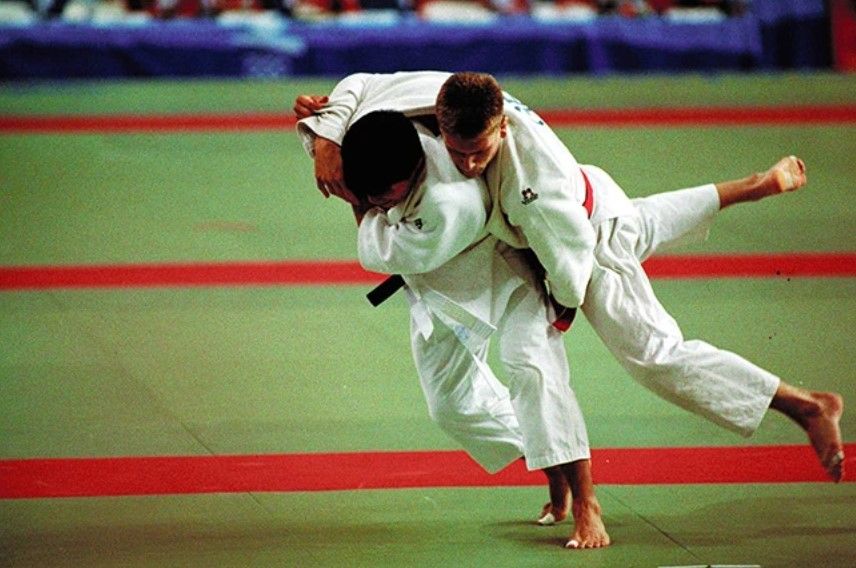How do you build a family of techniques in judo? By this, I mean a group of techniques that are inter-related.
The best way to illustrate this is to use the late, great Toshihiko Koga as an example. Although a right-hander who principally throws to the right, he adopts a left-handed grip. This might seem odd but it makes sense once you understand his family of techniques.
His main throw is ippon-seoi-nage, which he throws to the right. Since ippon-seoi is most effectively done off the lapel (rathe than the sleeve, as is traditionally taught), Koga ended up gripping uke's lapel with his left hand.
This is a left-handed grip, not a right-handed grip. Nevertheless, he has managed to work out a range of right-handed throws that he can do off of that left-handed grip.
For example, from that same grip, he does kouchi-makikomi to the right. He also does koshi-guruma to the right. He even has a gutsy tani-otoshi which he does to the right. All these throws are done of the same lapel grip that he secures with his left hand.
There are situations where he changes grips. When faced with an extreme left-hander, he's been known to switch to a right handed grip, where his right hand goes for uke's left lapel. And he has some moves that he can do off that grip. But for the most part, he sticks with his favorite lapel grip secured with his left hand.
Now, let's look at Britian's famed World Champion Neil Adams. He preferred a more traditional right-handed sleeve-lapel grip. What that means is he takes hold of uke's right sleeve with his left hand and uke's left lapel with his right hand.
From there, he can do a variety of techniques. He did uchimata, tai-otoshi, kouchi-gari, osoto-gari and kosoto-gari, all towards the right. He also had a drop seoi-nage which he rhrew to the left (off the lapel grip). This is his family of techniques, which he could do without changing his grips.
The concept of family of techniques can apply to newaza too. Here, you don't look so much at grips as much as positioning. In newaza, there are a few key positions that you will find yourself in.
Let's say uke is in turtle position. Do you want to attack uke riding turtle? Or you do you want to attack uke from the side of turtle? Or from the front of turtle (head to head).
If you decide your favorite position to attack uke is when you are riding turtle, you should develop a range of techniques that you can do from that same initial position.
For example, when you are riding turtle, from there you could do a rolling juji-gatame, or you could pin uke using a kata-gatame roll, or you can strangle uke using a koshi-jime. So, from one initial position, you could end up with an armlock, a pin and a choke. This is an example of family of techniques based on positioning.
It's also possible to build up a family of techniques based on achieving certain openings. For example, if you have wrist control of uke. From there, you could do various things: you can do a rolling juji-gatame (armlock), a rolling kataha-jime (choke), an osaekomi turnover called "thread the needle" and a sankaku turnover made famous by the British legend Karen Briggs. So many techniques off one initial opening (wrist control).
The key thing in building your family of techniques is that you don't want to switch grips (tachi-waza) or positions (newaza) too much. You want to be able to do a variety of techniques without signalling to your opponent what you are going to do. So if you maintain the same grip in tachi-waza and the same positioning in newaza, they have no idea what you are going to do next.
Family of Techniques
By ·

